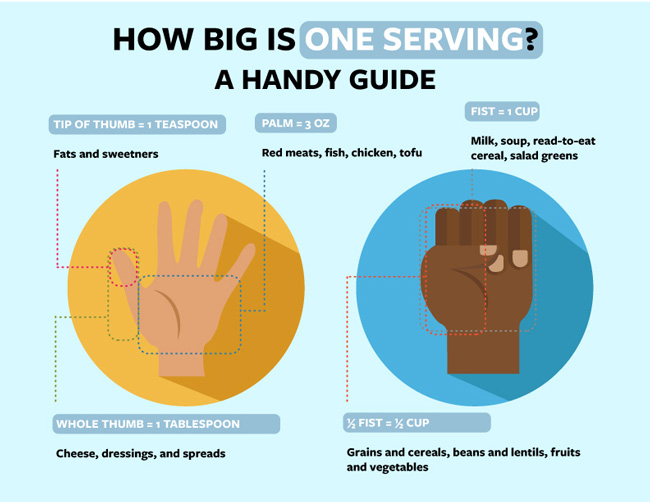

Mastering Moderation: Portion Size Tips for a Balanced Diet
Maintaining a healthy lifestyle involves more than just choosing nutritious foods; it also requires an understanding of portion sizes. Proper portion control plays a crucial role in managing weight, preventing overeating, and promoting overall well-being. In this article, we’ll explore practical portion size tips to help you achieve a balanced and healthy diet.
Understanding Portion vs. Serving Sizes
Before delving into specific tips, it’s essential to differentiate between portion and serving sizes. A portion is the amount of food you choose to eat at any given time, while a serving is a standardized amount used for nutritional information. Learning to gauge your portions based on your individual needs is a key aspect of maintaining a balanced diet.
Listen to Your Body’s Hunger Cues
One of the most effective ways to control portion sizes is by paying attention to your body’s hunger cues. Eat when you’re hungry and stop when you’re satisfied. Avoid the temptation to finish everything on your plate if you’re no longer hungry. This mindful approach allows you to tune in to your body’s signals and prevents unnecessary overeating.
Portion Sizes Tips Today: Discover more about portion control. Achieve balance for a healthier lifestyle with these valuable insights.
Use Smaller Plates and Bowls
The size of your dinnerware can influence your perception of portion sizes. Using smaller plates and bowls creates the illusion of a fuller plate with less food. This psychological trick can help you feel satisfied with smaller portions, making it easier to maintain a calorie-conscious diet.
Divide Your Plate Mindfully
A simple yet effective strategy is to mentally divide your plate into sections. Fill half of your plate with vegetables, one-quarter with lean protein, and the remaining quarter with whole grains or starchy vegetables. This balanced approach ensures that you’re getting a variety of nutrients without overdoing any particular food group.
Be Mindful of Liquid Calories
When it comes to portion control, it’s not just about solid foods. Liquid calories can contribute significantly to your overall intake. Be mindful of portion sizes for beverages, especially sugary drinks and alcoholic beverages. Opt for water, herbal teas, or other low-calorie options to stay hydrated without adding unnecessary calories.
Learn to Estimate Serving Sizes
While it’s helpful to be aware of standardized serving sizes, it’s not always practical to measure every ounce of food. Learning to estimate serving sizes using visual cues can be a valuable skill. For example, a serving of meat is about the size of a deck of cards, and a cup of vegetables is roughly the size of a baseball.
Pack Snacks in Single Servings
Snacking can be a pitfall for overeating if not done mindfully. When preparing snacks, portion them into single servings rather than eating directly from a larger package. This not only helps with portion control but also makes it easier to track your daily calorie intake.
Practice Intuitive Eating
Intuitive eating involves listening to your body’s cues, eating without strict rules, and enjoying food without guilt. This approach encourages a healthy relationship with food, as it emphasizes satisfaction and pleasure in eating. By practicing intuitive eating, you naturally become more attuned to your body’s portion needs.
Avoid Distractions While Eating
Eating in front of the TV or computer can lead to mindless overeating. Distractions can prevent you from recognizing fullness cues, causing you to consume more than necessary. Aim to eat in a designated dining area, savoring each bite and being present in the moment.
Conclusion
Mastering portion control is a key component of achieving a balanced and healthy diet. By incorporating these practical tips into your daily routine, you can develop a mindful approach to eating that supports overall well-being. Remember, it’s not about deprivation but rather about making informed choices that contribute to a sustainable and enjoyable relationship with food.



